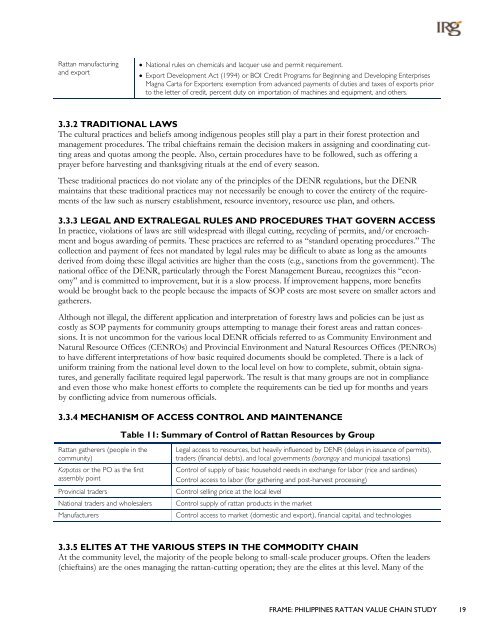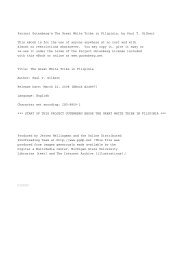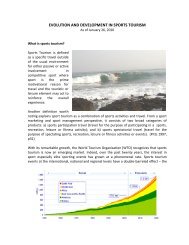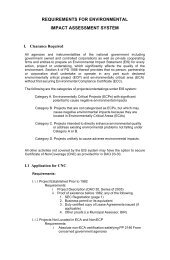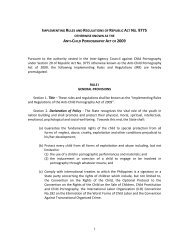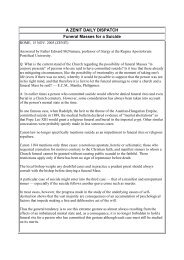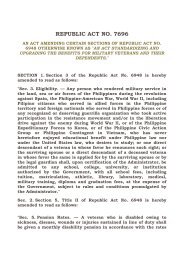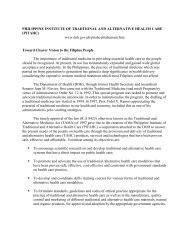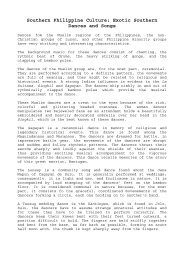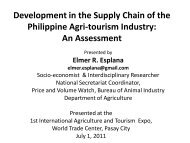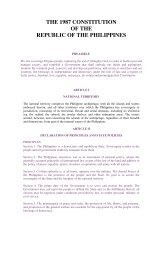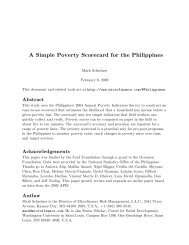PHILIPPINES RATTAN VALUE CHAIN STUDY - About the Philippines
PHILIPPINES RATTAN VALUE CHAIN STUDY - About the Philippines
PHILIPPINES RATTAN VALUE CHAIN STUDY - About the Philippines
You also want an ePaper? Increase the reach of your titles
YUMPU automatically turns print PDFs into web optimized ePapers that Google loves.
Rattan manufacturing<br />
and export<br />
• National rules on chemicals and lacquer use and permit requirement.<br />
• Export Development Act (1994) or BOI Credit Programs for Beginning and Developing Enterprises<br />
Magna Carta for Exporters: exemption from advanced payments of duties and taxes of exports prior<br />
to <strong>the</strong> letter of credit, percent duty on importation of machines and equipment, and o<strong>the</strong>rs.<br />
3.3.2 TRADITIONAL LAWS<br />
The cultural practices and beliefs among indigenous peoples still play a part in <strong>the</strong>ir forest protection and<br />
management procedures. The tribal chieftains remain <strong>the</strong> decision makers in assigning and coordinating cutting<br />
areas and quotas among <strong>the</strong> people. Also, certain procedures have to be followed, such as offering a<br />
prayer before harvesting and thanksgiving rituals at <strong>the</strong> end of every season.<br />
These traditional practices do not violate any of <strong>the</strong> principles of <strong>the</strong> DENR regulations, but <strong>the</strong> DENR<br />
maintains that <strong>the</strong>se traditional practices may not necessarily be enough to cover <strong>the</strong> entirety of <strong>the</strong> requirements<br />
of <strong>the</strong> law such as nursery establishment, resource inventory, resource use plan, and o<strong>the</strong>rs.<br />
3.3.3 LEGAL AND EXTRALEGAL RULES AND PROCEDURES THAT GOVERN ACCESS<br />
In practice, violations of laws are still widespread with illegal cutting, recycling of permits, and/or encroachment<br />
and bogus awarding of permits. These practices are referred to as “standard operating procedures.” The<br />
collection and payment of fees not mandated by legal rules may be difficult to abate as long as <strong>the</strong> amounts<br />
derived from doing <strong>the</strong>se illegal activities are higher than <strong>the</strong> costs (e.g., sanctions from <strong>the</strong> government). The<br />
national office of <strong>the</strong> DENR, particularly through <strong>the</strong> Forest Management Bureau, recognizes this “economy”<br />
and is committed to improvement, but it is a slow process. If improvement happens, more benefits<br />
would be brought back to <strong>the</strong> people because <strong>the</strong> impacts of SOP costs are most severe on smaller actors and<br />
ga<strong>the</strong>rers.<br />
Although not illegal, <strong>the</strong> different application and interpretation of forestry laws and policies can be just as<br />
costly as SOP payments for community groups attempting to manage <strong>the</strong>ir forest areas and rattan concessions.<br />
It is not uncommon for <strong>the</strong> various local DENR officials referred to as Community Environment and<br />
Natural Resource Offices (CENROs) and Provincial Environment and Natural Resources Offices (PENROs)<br />
to have different interpretations of how basic required documents should be completed. There is a lack of<br />
uniform training from <strong>the</strong> national level down to <strong>the</strong> local level on how to complete, submit, obtain signatures,<br />
and generally facilitate required legal paperwork. The result is that many groups are not in compliance<br />
and even those who make honest efforts to complete <strong>the</strong> requirements can be tied up for months and years<br />
by conflicting advice from numerous officials.<br />
3.3.4 MECHANISM OF ACCESS CONTROL AND MAINTENANCE<br />
Table 11: Summary of Control of Rattan Resources by Group<br />
Rattan ga<strong>the</strong>rers (people in <strong>the</strong><br />
community)<br />
Kapatas or <strong>the</strong> PO as <strong>the</strong> first<br />
assembly point<br />
Provincial traders<br />
National traders and wholesalers<br />
Manufacturers<br />
Legal access to resources, but heavily influenced by DENR (delays in issuance of permits),<br />
traders (financial debts), and local governments (barangay and municipal taxations)<br />
Control of supply of basic household needs in exchange for labor (rice and sardines)<br />
Control access to labor (for ga<strong>the</strong>ring and post-harvest processing)<br />
Control selling price at <strong>the</strong> local level<br />
Control supply of rattan products in <strong>the</strong> market<br />
Control access to market (domestic and export), financial capital, and technologies<br />
3.3.5 ELITES AT THE VARIOUS STEPS IN THE COMMODITY <strong>CHAIN</strong><br />
At <strong>the</strong> community level, <strong>the</strong> majority of <strong>the</strong> people belong to small-scale producer groups. Often <strong>the</strong> leaders<br />
(chieftains) are <strong>the</strong> ones managing <strong>the</strong> rattan-cutting operation; <strong>the</strong>y are <strong>the</strong> elites at this level. Many of <strong>the</strong><br />
FRAME: <strong>PHILIPPINES</strong> <strong>RATTAN</strong> <strong>VALUE</strong> <strong>CHAIN</strong> <strong>STUDY</strong> 19


